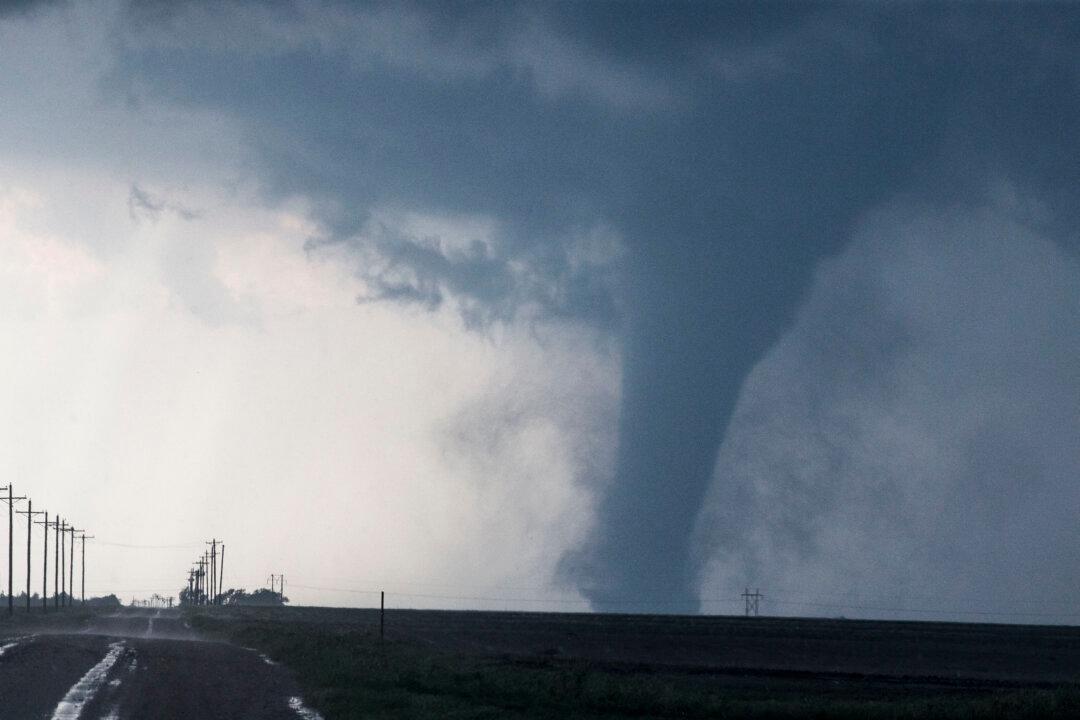Tornadoes and winds of up to 100 mph hit the central United States on Wednesday, bringing with them record heat levels, wildfires, and dangerous dust storms.
The National Weather Service (NWS) Storm Prediction Center said Wednesday that a new record had been set for the most number of hurricane-force (75+ mph) thunderstorm wind gusts in a day since 2004, at 55 and counting, surpassing the Aug. 10, 2020 record of 53.





